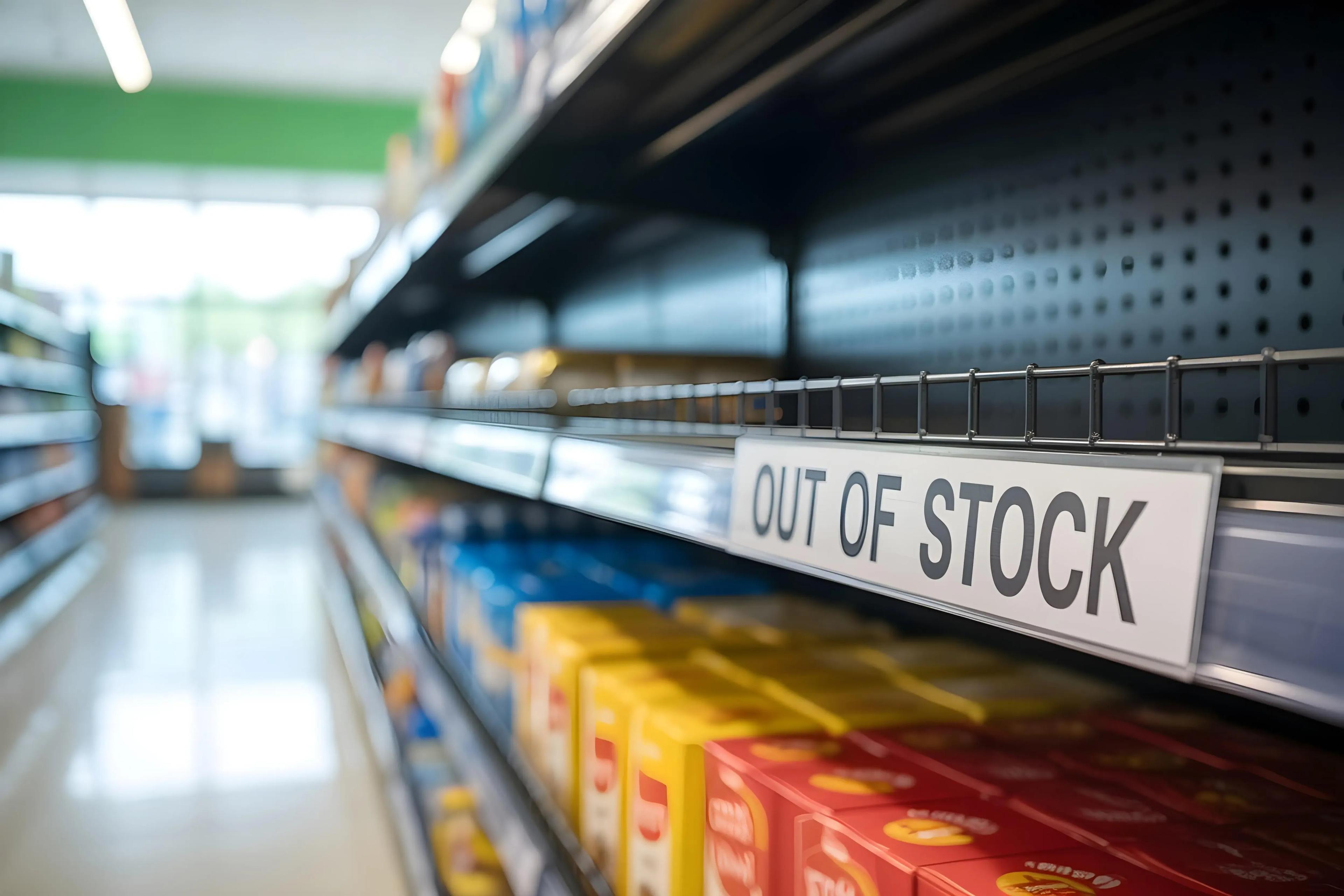Out of stock situations remain a key challenge for the distribution chain. Beyond lost revenue, stockouts can affect customer confidence and long-term loyalty.
Several factors can cause out-of-stock situations, including inaccurate demand forecasting, poor inventory management, and supply chain disruptions. Identifying these causes helps businesses maintain efficiency and consistent product availability.
Why Do Products Go Out of Stock?
Products often go out of stock due to operational and supply chain challenges that affect how inventory is planned, tracked, and distributed. Below are the most common causes and how they impact product availability.
- Lack of Real-Time Visibility
Without real-time visibility, it's difficult for businesses to manage inventory across multiple locations. As a result, stock may be untracked, deliveries may be delayed, and sales opportunities lost. - Inaccurate Demand Forecasting
Underestimating customer demand can result in empty shelves and stockouts. Inaccurate demand forecasting not only disrupts product availability but can also delay or cancel subsequent orders, creating a ripple effect across the entire supply chain. - Maintaining Inventory Accuracy
Inaccurate data results when stock records don’t match the actual items in storage. Causes include shipping errors, product returns, or misplacement, which create gaps in product availability and make it harder for businesses to keep items consistently in stock. - Supplier or Logistics Delays
Delays from suppliers, logistical obstacles, or coordination gaps can disrupt product flow and reduce availability. Even fully stocked warehouses don’t always guarantee that products reach stores on time. - Uneven Distribution of Products
Products that are inefficiently distributed across stores or warehouses can cause high-demand items to go out of stock, while overstocked slow-moving items consume space that could be used for fast-selling products.
How to Minimize Out of Stock
Minimizing out-of-stock situations requires a proactive approach to inventory and supply chain management, with strategies that help ensure products remain available, including:
- Implement Real-Time Inventory Tracking
Maintain real-time visibility of stock across all channels and locations, allowing teams to respond quickly, plan replenishments efficiently, and prevent stockouts. - Use Data to Drive Decisions
Use sales data, seasonal trends, and records to plan inventory. Helps predict demand and prevent stockouts. - Automate Inventory Processes
Implement technologies such as barcode scanning and integrated systems to reduce human error, with automated systems keeping records accurate. - Ensure the Flow of Products
Maintain backup suppliers, safety stock, and flexible logistics strategies. Preparation for delays or disruptions keeps products flowing and prevents gaps in availability. - Optimize Distribution and Stock Allocation
Ensure products are in the right place at the right time through smart allocation and regular stock reviews, preventing overstock while keeping high-demand items available.
By focusing on data, technology, and strategic planning, businesses can maintain consistent product availability, delight customers, and minimize lost sales due to stockouts.
BOSNET Solutions for Ensuring Product Availability
Preventing stockouts starts with implementing a comprehensive system designed for seamless distribution and efficient stock control.
BOSNET solutions help businesses maintain optimal stock levels and streamline operations. Our platform provides the tools to prevent stockouts, manage inventory, and ensure products reach the right place, helping businesses increase revenue, reduce costs, and protect assets.
Contact us to learn how BOSNET can optimize your supply chain operations.
#BOSNET #BestFMCGRunsBOSNET #Distribution #SupplyChain #IncreaseRevenue #ReduceCost #ProtectAssets

